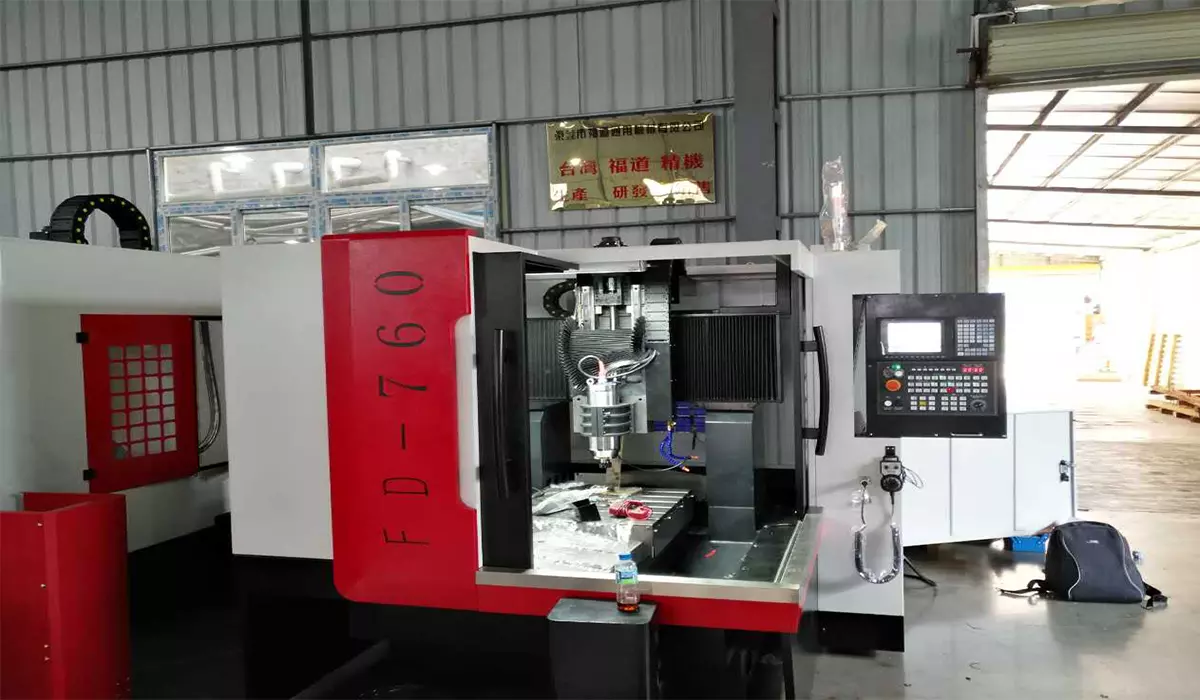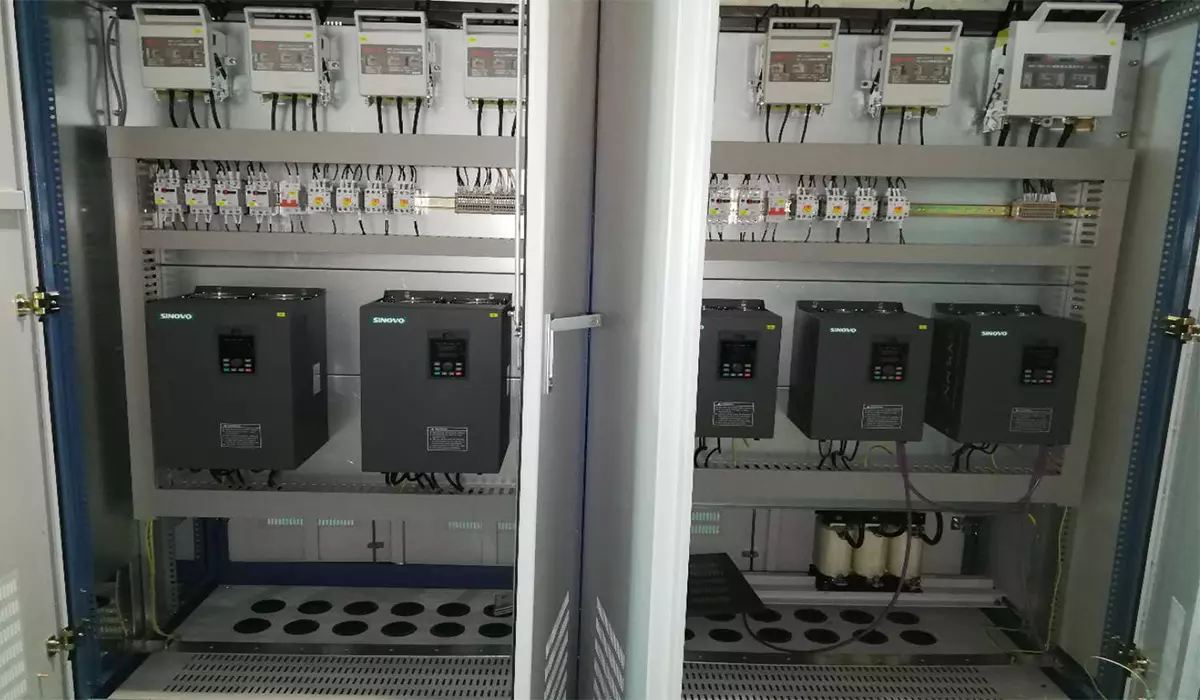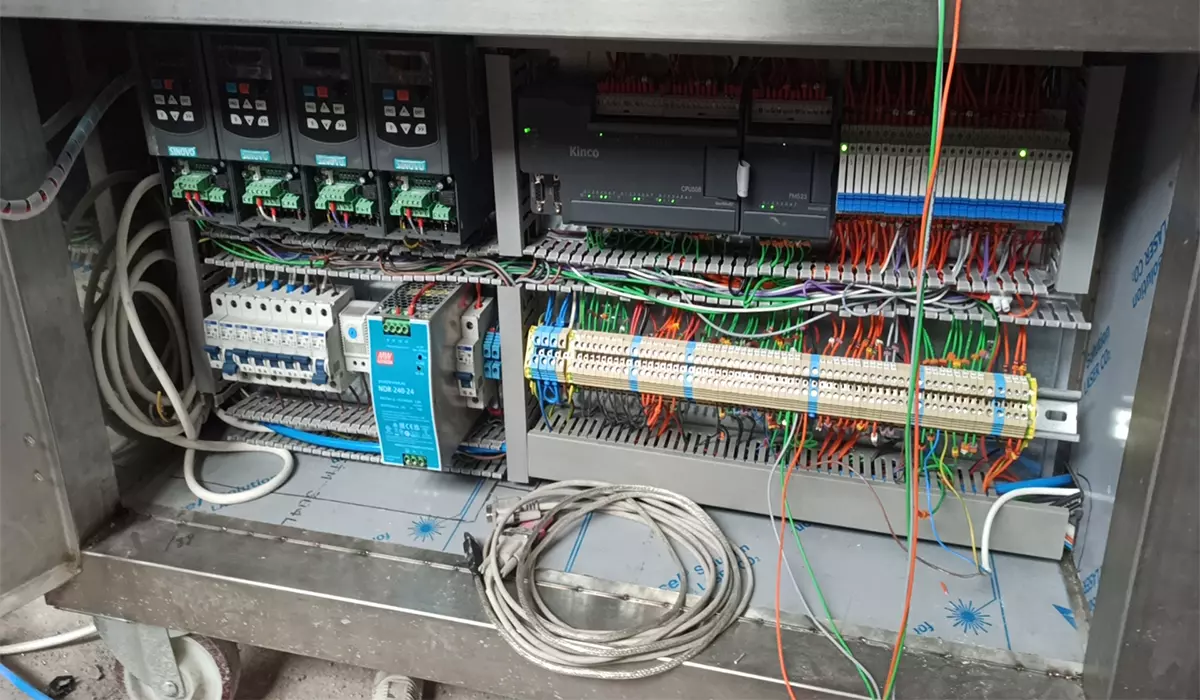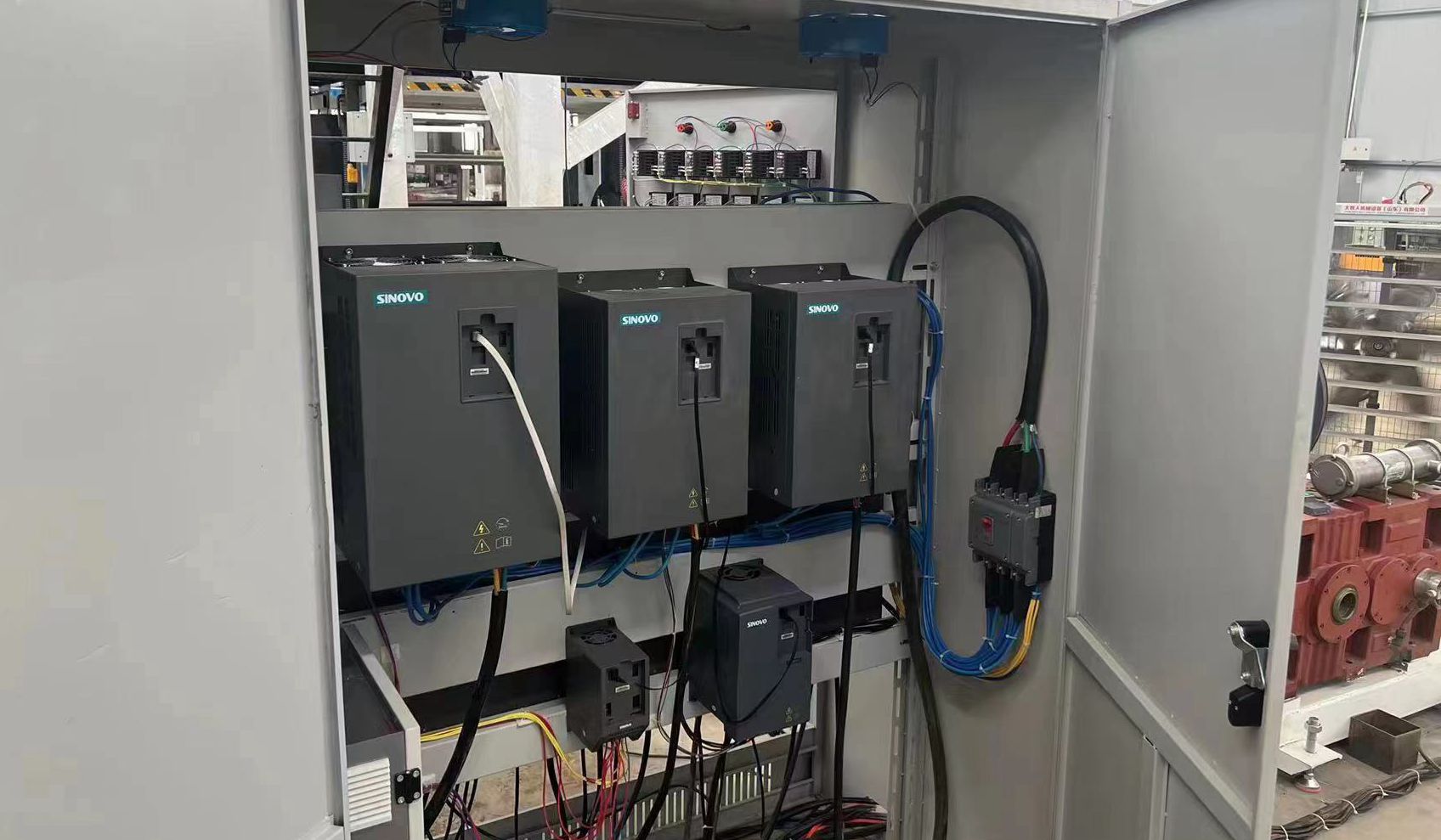In recent years, with the development of computer network technology, it has become a reality to use communication modules integrated in VFD or communication templates to connect to PLC and VFD through communication interfaces to drive motor speed regulation. Specify the special data register D8120 as the data unit of the communication transmission format, and its setting value should match the setting value of the VFD parameter unit Pr.117~Pr.124. The bearing is the serial communication template of the PLC, which plays the role of network communication between the PLC and the four VFDs. It is an indispensable intermediate link in the communication.
Understanding VFD Technology:
Variable Frequency Drives, commonly referred to as VFDs, are sophisticated electronic devices designed to control the speed, torque, and direction of an electric motor by adjusting the frequency and voltage of the power supplied to it. This dynamic control capability makes VFDs an invaluable asset in optimizing the performance of machine tools.

Benefits of VFD Technology in Machine Tool Control:
1. Precise Speed Control:
VFDs empower machine tools with precise speed control, allowing for seamless adjustments during various machining operations. This precision enhances the overall accuracy and quality of the manufacturing process.
2. Energy Efficiency:
VFDs contribute to significant energy savings by regulating the motor speed based on the actual requirements of the machining task. This adaptability ensures that energy is consumed efficiently, translating to cost savings and a reduced environmental footprint.
3. Reduced Mechanical Stress:
Traditional machine tools often endure mechanical stress due to abrupt starts and stops. VFDs facilitate smooth acceleration and deceleration, minimizing wear and tear on machine components and prolonging their operational lifespan.
4. Enhanced Torque Control:
Machine tools often demand varying torque levels based on the material being processed. VFDs provide precise torque control, adapting to different loads and ensuring consistent performance across diverse machining scenarios.
5. Improved Process Flexibility:
The flexibility afforded by VFD technology allows machine tools to handle a broader range of materials and processes. This adaptability is crucial in modern manufacturing, where versatility is a key competitive advantage.
Integration Challenges and Solutions:
1. Compatibility Concerns:
Integrating VFDs into existing machine tool systems may pose compatibility challenges. However, manufacturers often provide comprehensive guidelines for seamless integration.
2. Training and Education:
To fully harness the capabilities of VFDs, machine operators and technicians may require additional training. Investing in education ensures that the workforce can maximize the benefits of this advanced technology.
3. Cost Considerations:
While the initial investment in VFD technology might be a concern, the long-term savings in energy costs and reduced maintenance expenses often outweigh the upfront expenditure.
Case Studies:
Highlighting real-world examples of machine tool control systems that have successfully integrated VFDs can provide practical insights into the transformative power of this technology.
The integration of Variable Frequency Drives into machine tool control systems represents a paradigm shift in the manufacturing landscape. The precision, energy efficiency, and enhanced control capabilities offered by VFDs position them as indispensable components in modern machining operations. As industries continue to embrace technological advancements, the synergy between VFDs and machine tools will undoubtedly shape the future of manufacturing.
More: Why Is The VFD Widely Used In The Machine Tool Industry?
In recent years, with the development of computer network technology, it has become a reality to use communication modules integrated in VFD or communication templates to connect to PLC and VFD through communication interfaces to drive motor speed regulation. Specify the special data register D8120 as the data unit of the communication transmission format, and its setting value should match the setting value of the VFD parameter unit Pr.117~Pr.124. The bearing is the serial communication template of the PLC, which plays the role of network communication between the PLC and the four VFDs. It is an indispensable intermediate link in the communication.
Understanding VFD Technology:
Variable Frequency Drives, commonly referred to as VFDs, are sophisticated electronic devices designed to control the speed, torque, and direction of an electric motor by adjusting the frequency and voltage of the power supplied to it. This dynamic control capability makes VFDs an invaluable asset in optimizing the performance of machine tools.

Benefits of VFD Technology in Machine Tool Control:
1. Precise Speed Control:
VFDs empower machine tools with precise speed control, allowing for seamless adjustments during various machining operations. This precision enhances the overall accuracy and quality of the manufacturing process.
2. Energy Efficiency:
VFDs contribute to significant energy savings by regulating the motor speed based on the actual requirements of the machining task. This adaptability ensures that energy is consumed efficiently, translating to cost savings and a reduced environmental footprint.
3. Reduced Mechanical Stress:
Traditional machine tools often endure mechanical stress due to abrupt starts and stops. VFDs facilitate smooth acceleration and deceleration, minimizing wear and tear on machine components and prolonging their operational lifespan.
4. Enhanced Torque Control:
Machine tools often demand varying torque levels based on the material being processed. VFDs provide precise torque control, adapting to different loads and ensuring consistent performance across diverse machining scenarios.
5. Improved Process Flexibility:
The flexibility afforded by VFD technology allows machine tools to handle a broader range of materials and processes. This adaptability is crucial in modern manufacturing, where versatility is a key competitive advantage.
Integration Challenges and Solutions:
1. Compatibility Concerns:
Integrating VFDs into existing machine tool systems may pose compatibility challenges. However, manufacturers often provide comprehensive guidelines for seamless integration.
2. Training and Education:
To fully harness the capabilities of VFDs, machine operators and technicians may require additional training. Investing in education ensures that the workforce can maximize the benefits of this advanced technology.
3. Cost Considerations:
While the initial investment in VFD technology might be a concern, the long-term savings in energy costs and reduced maintenance expenses often outweigh the upfront expenditure.
Case Studies:
Highlighting real-world examples of machine tool control systems that have successfully integrated VFDs can provide practical insights into the transformative power of this technology.
The integration of Variable Frequency Drives into machine tool control systems represents a paradigm shift in the manufacturing landscape. The precision, energy efficiency, and enhanced control capabilities offered by VFDs position them as indispensable components in modern machining operations. As industries continue to embrace technological advancements, the synergy between VFDs and machine tools will undoubtedly shape the future of manufacturing.
More: Why Is The VFD Widely Used In The Machine Tool Industry?
continue reading
Related Posts
Variable Frequency Drives (VFDs) and motors are integral components in industrial automation, each serving distinct yet interconnected roles in controlling […]
Variable frequency motors (VFMs) are crucial in modern industrial applications due to their efficiency and precise control over motor speed […]
Variable Frequency Technology (VFT) is increasingly being recognized as a game-changer in the industrial automation sector, particularly in applications involving […]



